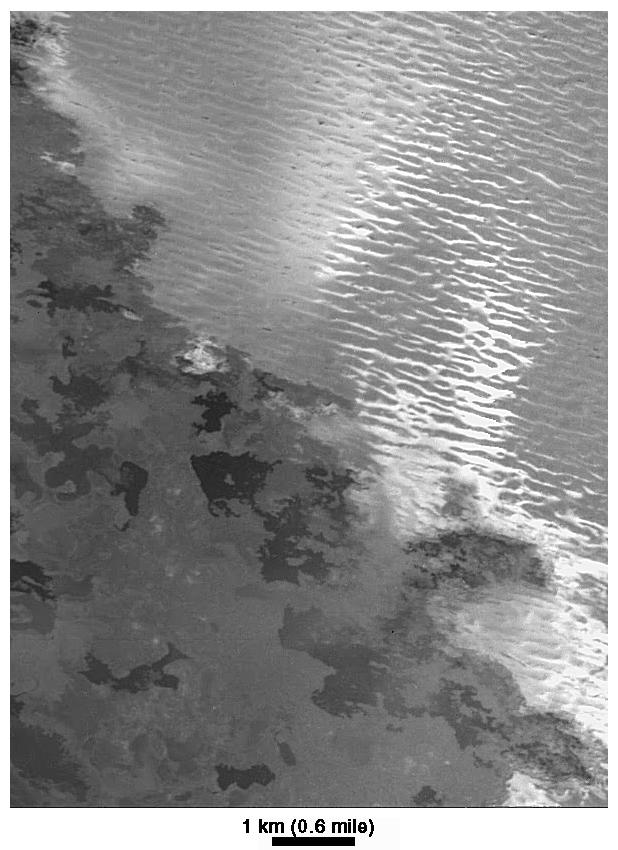

This image, acquired by NASA's Galileo spacecraft on February 22, 2000 at a resolution of 12 meters (39 feet) per pixel element, shows the margin of the lava flow field associated with the Prometheus plume. The dark lava has margins similar to those formed by fluid lava flows on Earth. This entire area is under the active plume of Prometheus, which is constantly raining bright material. Hence, Galileo scientists interpret the darkest flows as being the most recent. They are not yet covered by bright plume fallout and perhaps too warm for bright sulfur-dioxide-rich gas to condense.
The older plains (upper right) are covered by ridges with an east-west trend. These ridges may have formed by the folding of a surface layer or by deposition or erosion. Bright streaks across the ridged plains emanate from the lava flow margins, perhaps where the hot lava vaporizes sulfur dioxide. The bright material must be ejected at a low angle because it only coats the lava-facing sides of the ridges. North is slightly to the right of straight up.
Image produced by: Alfred McEwen, Planetary Image Research Lab. (PIRL), Lunar and Planetary Lab. (LPL), University of Arizona
The Jet Propulsion Laboratory, Pasadena, CA manages the Galileo mission for NASA's Office of Space Science, Washington, DC. JPL is a division of the California Institute of Technology, Pasadena, CA.
This image and other images and data received from Galileo are posted on the World Wide Web, on the Galileo mission home page at http://galileo.jpl.nasa.gov/. Background information and educational context for the images can be found at http://galileo.jpl.nasa.gov/images/io/ioimages.html.
NASA's Planetary Photojournal PIA-02557
May 31, 2000